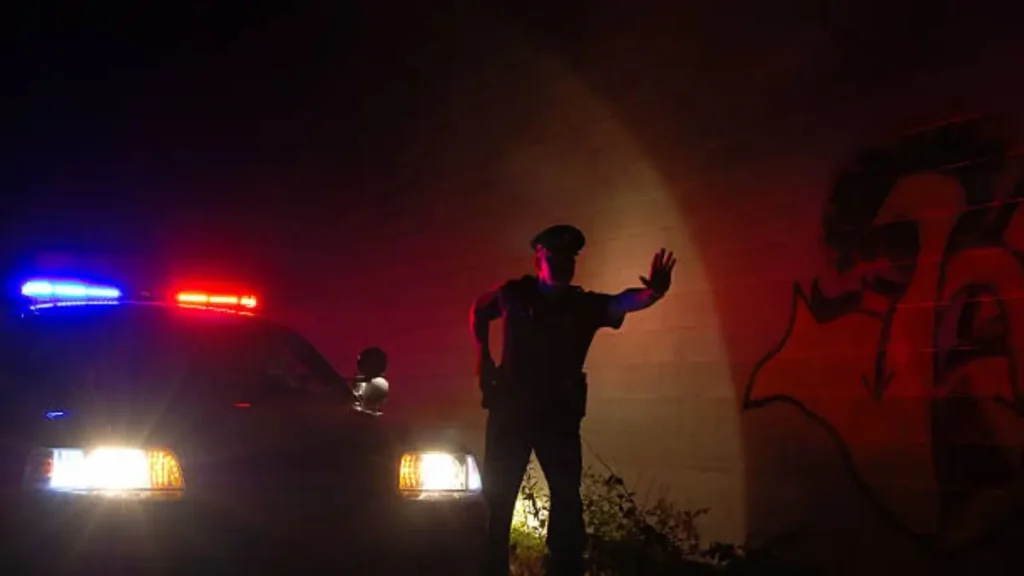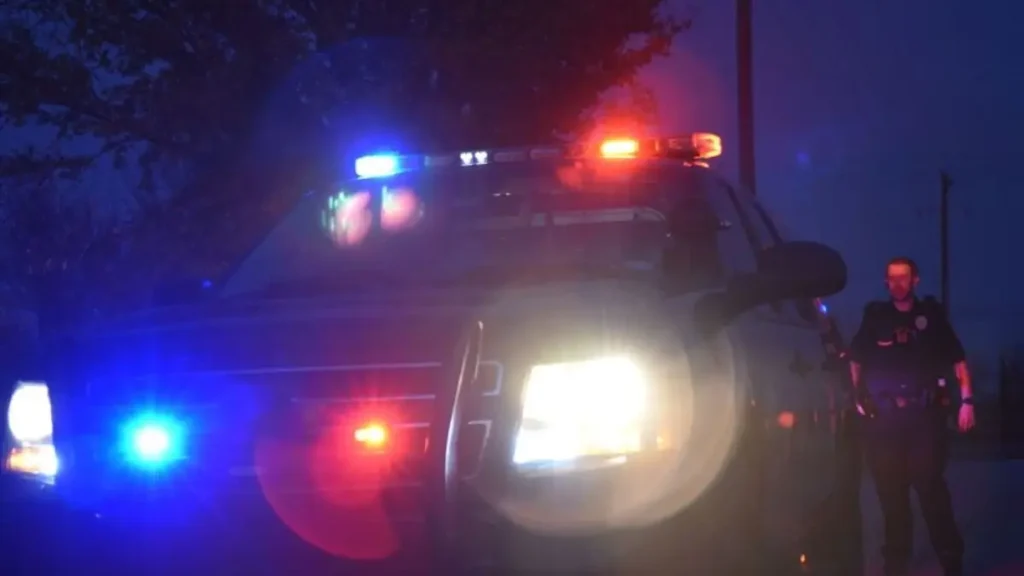Arkansas Man Arrested for Murdering Mother and Sister in Their Home
I can’t stop thinking about what the sister’s husband must have walked into that Sunday morning.
On June 22, just before 7:30 a.m., police in Bryant, Arkansas, responded to a call that led them to a home where three people—one family—had been shot dead. A mother, her husband, and her daughter. All killed inside the house. No signs of a break-in. No signs of struggle. And three kids were inside the home during the shooting. Thankfully, none of them were physically harmed.
The suspect? Jarrod Mitchell. The son. The brother. He was arrested later that day and charged with three counts of first-degree murder.
What stands out is how normal the setting sounds. This wasn’t a remote cabin or some dark alley. It was a regular house in a quiet neighborhood. Families live here. Kids go to school nearby. People walk their dogs down the same street.
There were no signs of forced entry. That matters. It tells us this wasn’t a random act—this was someone trusted, someone who belonged there.
And that changes how we see it, doesn’t it?
Because when violence like this happens inside a home, the very place that’s supposed to feel safe, it hits differently. It raises questions that no headline can answer: How did it get this far? Did anyone see this coming? Could it have been prevented?
This story isn’t just another crime report—it’s a devastating reminder that some of the biggest dangers don’t come from outside. They come from the people we sit across from at dinner.
The Man Accused: Who Is Jarrod Mitchell?
Let’s talk about the person at the center of this.
Jarrod Mitchell, 34 years old. Police say he’s the one who killed his mother, stepfather, and sister—all people he grew up with or lived near. He was arrested just hours after the bodies were found, according to PEOPLE magazine, and is now sitting in the Saline County Detention Center without bail.
What really sticks with me is that he wasn’t some stranger with a long record of violent crime. His past, while troubled, was mostly filled with drug charges. Non-violent ones.
But back in 2017, things escalated. His own grandparents filed a petition to have him committed, warning that he was threatening his mother, her husband, and his sister—even laying knives out on the bed. The court documents obtained by People reveal that a judge agreed there was “clear and convincing evidence” that Jarrod was dangerous and possibly homicidal.
Now think about this: That warning came almost exactly eight years before the actual murders—June 18, 2017 to June 22, 2025. That’s not just coincidence. That’s a red flag no one followed up on hard enough.
And I get it—you might know someone with mental health issues or a history of drug use. But here’s the truth no one wants to say out loud: ignoring threats, even from family, can cost lives.
The Missed Warnings: Could This Have Been Prevented?
It’s hard not to ask the uncomfortable question: Did the system fail this family?
I think it did.
Jarrod had already been involuntarily committed once. His family clearly saw the signs and tried to get help. But after a 21-day detox order, he was back out—and from what we can tell, not much changed.
We don’t know if he got long-term treatment. We don’t know if anyone kept tabs on his mental health or sobriety after that. What we do know is that his behavior wasn’t new. It had escalated before, and it escalated again.
And if you’re someone who’s ever had to deal with a loved one spiraling—through addiction, mental illness, or both—you know how helpless it can feel. But stories like this are why you can’t afford to stay silent. Threats are never just “emotional outbursts.” They’re warnings. And sometimes, they’re the last ones you get.
Stories like this are reminders that warning signs matter. I recently came across a WhatsApp update thread that shares real-time alerts and case breakdowns—it’s helped me stay better informed without doomscrolling. Worth checking if you like staying ahead on public safety.
What Police Are Saying—and What’s Still Missing

The Bryant Police Department got the call at 7:30 a.m. on June 22. They arrived, found the bodies, and confirmed all three victims died from gunshot wounds. No signs of forced entry. No signs of a struggle. Just silence.
That silence tells you something important: whoever did this didn’t need to break in. That means trust. Familiarity. That means Jarrod likely walked in, or was already inside, and then pulled the trigger.
According to THV11, three children were home at the time. They were unharmed physically, but let’s not sugarcoat this—what they experienced will stay with them forever.
As of now, police are still investigating. No motive has been officially released. The public information officer told THV11 that they’re digging deeper, but details are scarce.
And that’s where the frustration builds. You and I—we want answers. But sometimes, in the middle of an active investigation, all you get is silence. Still, that silence doesn’t erase what happened.
In a similar case earlier this year, a Burke County man was arrested for home invasion, which also raised questions about how fast police can respond when families are in danger.
How the Community Is Processing the Shock?
You might think something like this would feel far away—but not for the people in Bryant.
This happened in a quiet neighborhood. Near schools. On a street where families walk their dogs, where kids ride their bikes. The same place where, just hours before the murders, life was probably moving along like any other Saturday night.
People on local Facebook groups and community pages have described being stunned, heartbroken, even scared.
And if you’re reading this from a small town, or a quiet suburb, I know what you’re thinking: “Could this happen here?” The truth? Yes. Tragedy doesn’t check zip codes.
What makes it worse is that there’s no sense of closure yet—no why. No final story to make it make sense.
What about your neighborhood? Do you feel safe where you live? Drop your thoughts in the comments—your story might help someone else feel seen.
A Bigger Pattern: Family Violence and Mental Health Crises
This isn’t the first time Arkansas has faced something this horrific.
Back in the late 1980s, Ronald Gene Simmons killed 16 people—including his own family—right here in Arkansas. It shook the state then. This case has a similar shadow. A sense of betrayal not just from the violence, but because it came from someone trusted. Someone inside.
When someone kills their own family, it forces all of us to reckon with the one place that’s supposed to be safe—home.
It also forces us to look again at how we handle people in crisis. Drug abuse, threats, forced commitments—they’re not “family drama.” They’re early warnings. Warnings that, too often, get buried under shame, fear, or denial.
And if you’re in a situation like that—if someone close to you has shown signs they might hurt themselves or others—you need to act. Not wait. Not hope it’ll pass.
Because this story? It proves what can happen when you don’t.
We’ve seen this pattern repeat—even when it’s a tragic accident, like when a Philadelphia boy was injured after accidentally firing a gun at home. Different story, same lesson: homes aren’t always safe.
What Happens Next: The Legal Road Ahead

Right now, Jarrod Mitchell is being held without bail. He hasn’t had his first court appearance yet, but based on the charges—three counts of first-degree murder—he could face life in prison or the death penalty if convicted.
Arkansas law doesn’t go easy on homicide, especially when it involves multiple victims. First-degree murder here means prosecutors believe it was premeditated or deliberate. If they prove that, the consequences will be severe.
But let’s talk about something else that’s getting lost in the headlines: the kids.
Three children were in the house when this happened. We don’t know who’s taking care of them now. No official statement has been made about custody or whether they’ve been placed with family, foster care, or temporary guardians.
If you’ve ever worked in child services or even just seen a family fall apart, you know what happens next isn’t just about courtrooms—it’s about trauma, healing, and rebuilding lives from scratch.
And that’s the part we should be paying attention to just as much as the trial.
Just last month, a shooting in a Miami apartment left one person dead—it shows how quickly everyday settings can turn deadly without warning.
If You’re Dealing with Something Similar, Here’s Where to Turn
I don’t know who needs to hear this, but if someone close to you is spiraling—through addiction, violence, or mental illness—there’s still time to step in.
You don’t have to be a lawyer, therapist, or expert to recognize a threat. You just have to trust your gut. If someone in your home is making threats, stockpiling weapons, isolating themselves, or showing signs of extreme behavior, say something. Do something.
Here are a few places you can turn to:
- Arkansas Crisis Center: 888-274-7472
- National Domestic Violence Hotline: 800-799-7233
- SAMHSA Mental Health Hotline: 800-662-4357
- Local Sheriff or Family Court: You can petition for involuntary evaluation in Arkansas
You don’t need to wait for a tragedy to prove you were right. Trust your instincts. Protect your people.
Final Thoughts
This story isn’t just about one man’s breakdown. It’s about a system that saw the warnings and didn’t act hard enough. It’s about how quickly normal can turn into nightmare. And it’s about the hard truth we all have to face:
Sometimes, the danger is already inside the house.
If you’re someone who’s quietly worrying about a loved one’s behavior, don’t wait for the headlines to prove you were right. You have more power than you think.
If you’re following cases like this, you might want to explore more stories around home violence and law enforcement responses. Visit our website for more detailed coverage and updates.
Disclaimer: This article is based on publicly available information and police statements as of June 2025. Legal proceedings are ongoing and the accused is presumed innocent until proven guilty. Sensitive content has been handled with care to respect victims and their families.


